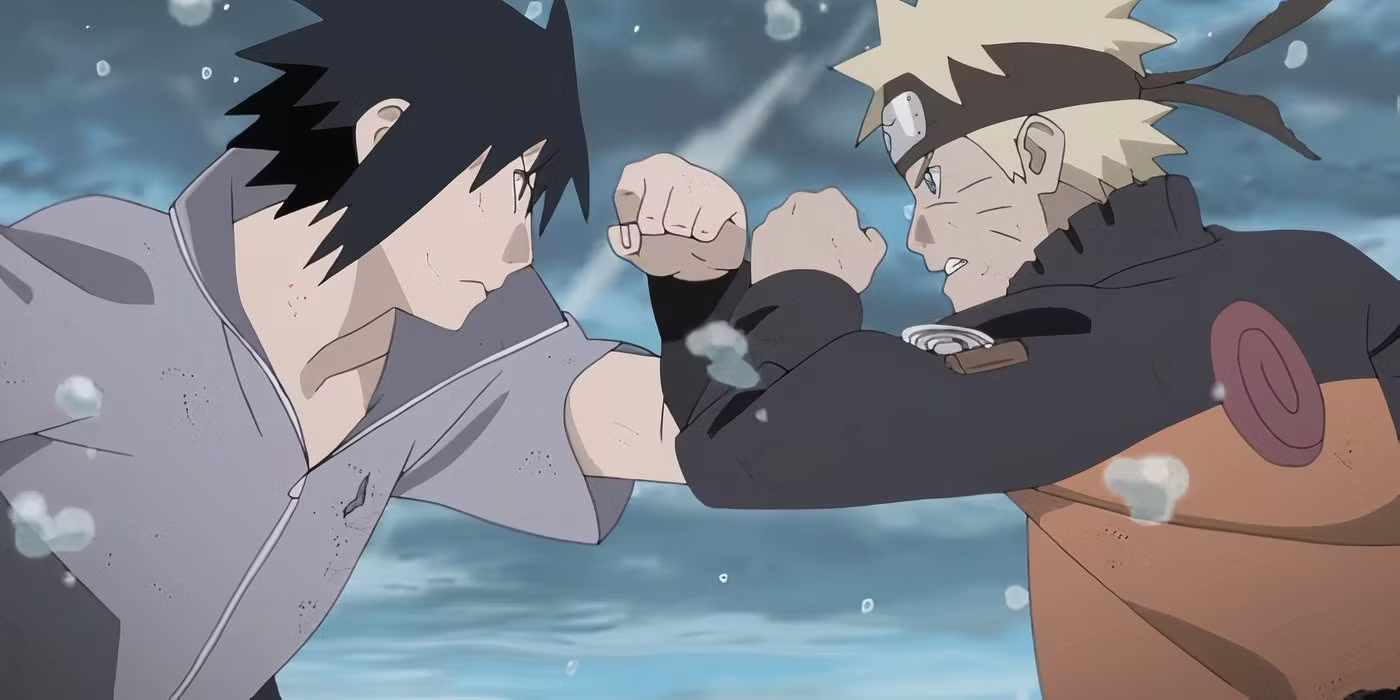
Since its debut, the anime series Naruto has established one of the most legendary rivalries in the anime world, particularly between two central characters, Naruto Uzumaki and Sasuke Uchiha. Their journeys have diverged significantly, each grappling with profound personal dilemmas. By the end of their arcs, both characters attained extraordinary levels of power, surpassing virtually every other shinobi. Yet, throughout the series, a burning question has lingered among fans: who is truly stronger?
This ambiguity in their rivalry is intentional. The creator of the series, Masashi Kishimoto, deliberately depicted Naruto and Sasuke as opposing yet complementary forces, steering clear of a definitive hierarchy. Across the original Naruto series, its sequel Shippuden, and even in Boruto, the two have alternated in terms of strength and dominance, engaging in epic battles that have left a lasting impact on the anime’s narrative—yet never providing a conclusive answer.
Classic Rivalry in Shōnen Style: Inspirations and Development
Kishimoto drew inspiration from iconic duos like Goku and Vegeta from Dragon Ball Z and Kaneda and Tetsuo from Akira. Naruto and Sasuke embody the classic archetype of "best friends who are rivals." Their dynamic serves as a crucial driving force in the story, functioning as both an emotional and symbolic engine that propels the narrative forward.
At the outset, Naruto harbored feelings of envy towards Sasuke’s natural abilities, while Sasuke found in Naruto a source of emotional strength that he struggled to understand. Over time, their rivalry evolved into a strong friendship, later shifted to antagonism, and eventually matured into mutual respect. Throughout these phases, the balance of power between the two characters constantly shifted.
Notable Conflicts: Five Battles Without a Clear Answer
Naruto and Sasuke faced off five significant times throughout the series, starting from their days in the academy and culminating in the climactic conclusion of Shippuden. Each battle is emblematic, representing the emotional and narrative state of the characters at that particular moment.
In their first encounter as children, Sasuke easily triumphed. The second battle, which took place on the rooftop of the Konoha hospital, was cut short. The third confrontation, set in the Valley of the End, marked the conclusion of the first part of the series, with Sasuke emerging victorious but choosing not to kill Naruto. Their fourth encounter was more symbolic, occurring after Sasuke’s fight against Danzō, during a particularly dark time for him. The final clash, again in the Valley of the End, concluded with both characters severely injured, signifying a reconciliation rather than a definitive victory.
Despite the intensity of these confrontations, none provided a clear conclusion regarding who was superior. Each character claimed one victory, while the last battle resulted in a technical draw.
Power Dynamics: Who Led During Each Phase?
The evolution of Naruto and Sasuke’s abilities has been both constant and remarkable. In the beginning, Sasuke was the more talented and disciplined of the two. However, Naruto’s relentless determination allowed him to catch up, especially after mastering Sage Mode and later acquiring the powers of the Sage of Six Paths. On the other hand, Sasuke honed his Sharingan, acquired the Rinnegan, and developed unique techniques such as Amaterasu and Susano’o.
Throughout Shippuden, determining who was more powerful became increasingly difficult, as both characters evolved in tandem, pushing each other to new heights. This symbiotic relationship persisted until the very end of their journeys.
In Boruto: A Shift in Power Without a Declared Winner
In the sequel series Boruto, the legacies of Naruto and Sasuke remain significant, albeit with their powers considerably diminished. Naruto suffered a tremendous loss when he lost Kurama, the Nine-Tails, after activating the potent Baryon Mode to defeat Isshiki Ōtsutsuki. Similarly, Sasuke’s Rinnegan was destroyed, stripping him of his most strategic ability.
These developments brought both characters closer in power to the new generation of protagonists, such as Boruto and Kawaki, while simultaneously complicating the longstanding debate over who is the strongest. With Naruto sealed in a later arc and Sasuke’s last battle occurring off-screen, the mystery surrounding their strength continues to intrigue fans.
Kishimoto’s Intent: Equality as the Final Message
Ultimately, Masashi Kishimoto never aimed to provide a definitive answer regarding who is stronger. Official databooks highlight the equivalence between Naruto and Sasuke, emphasizing that rather than declaring one the winner, the narrative underscores the idea that their strength lies in their complementarity. Naruto symbolizes hope, perseverance, and light, while Sasuke embodies darkness, introspection, and the weight of tough choices.
Both characters are vital for maintaining balance in the shinobi world. Perhaps this is the ultimate message: neither is stronger than the other because one cannot exist without the other.
Additionally, Naruto Shippuden aired from 2007 to 2017, encompassing the second phase of the Naruto saga. In this segment, Naruto returns after two years of rigorous training with the mission of confronting the Akatsuki and rescuing Sasuke from Orochimaru’s clutches. Meanwhile, the Akatsuki embarks on their quest for the Bijuus, setting the ninja world on the brink of its greatest crisis.
In total, the anime consists of 500 episodes (including fillers from Naruto Shippuden) and concludes the arcs of Naruto, Sasuke, Sakura, and Kakashi while laying the groundwork for a direct continuation of the story. Fans can enjoy the entirety of Naruto on Crunchyroll.
The ongoing fascination with the rivalry between Naruto and Sasuke continues to resonate with audiences, serving as a testament to the depth and complexity of their characters and the themes of friendship and rivalry that pervade the series.
